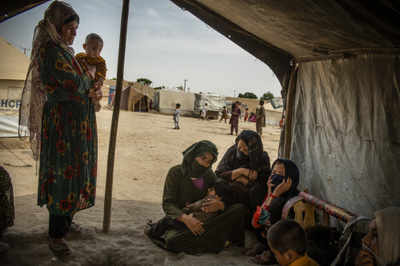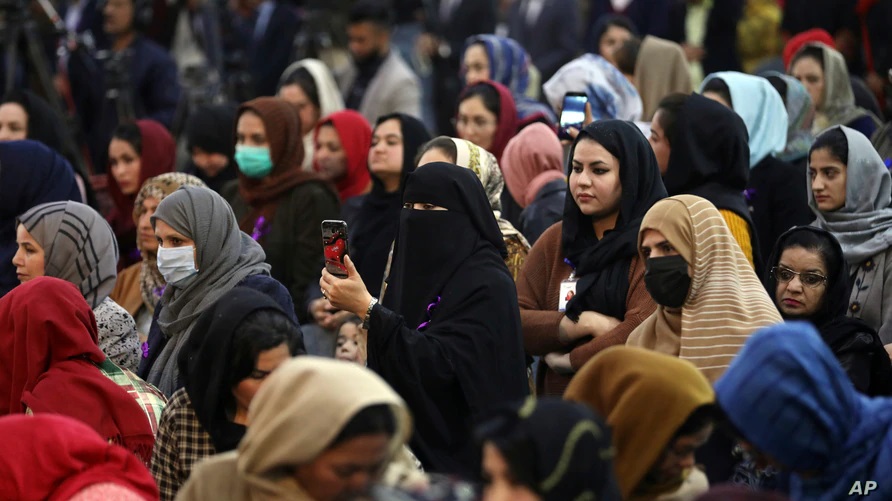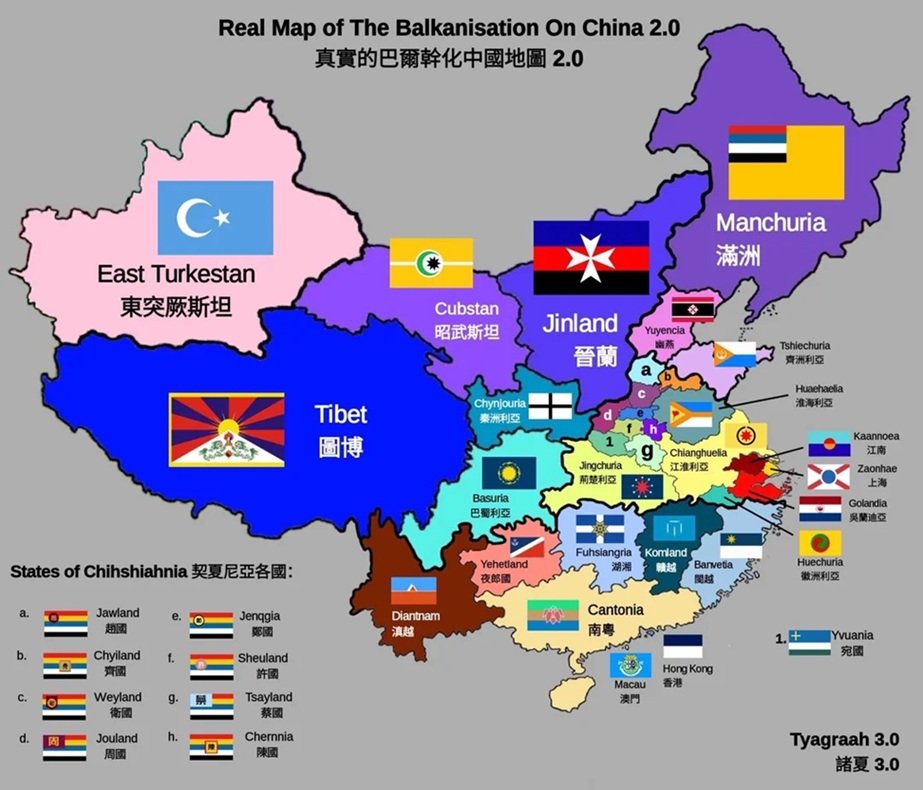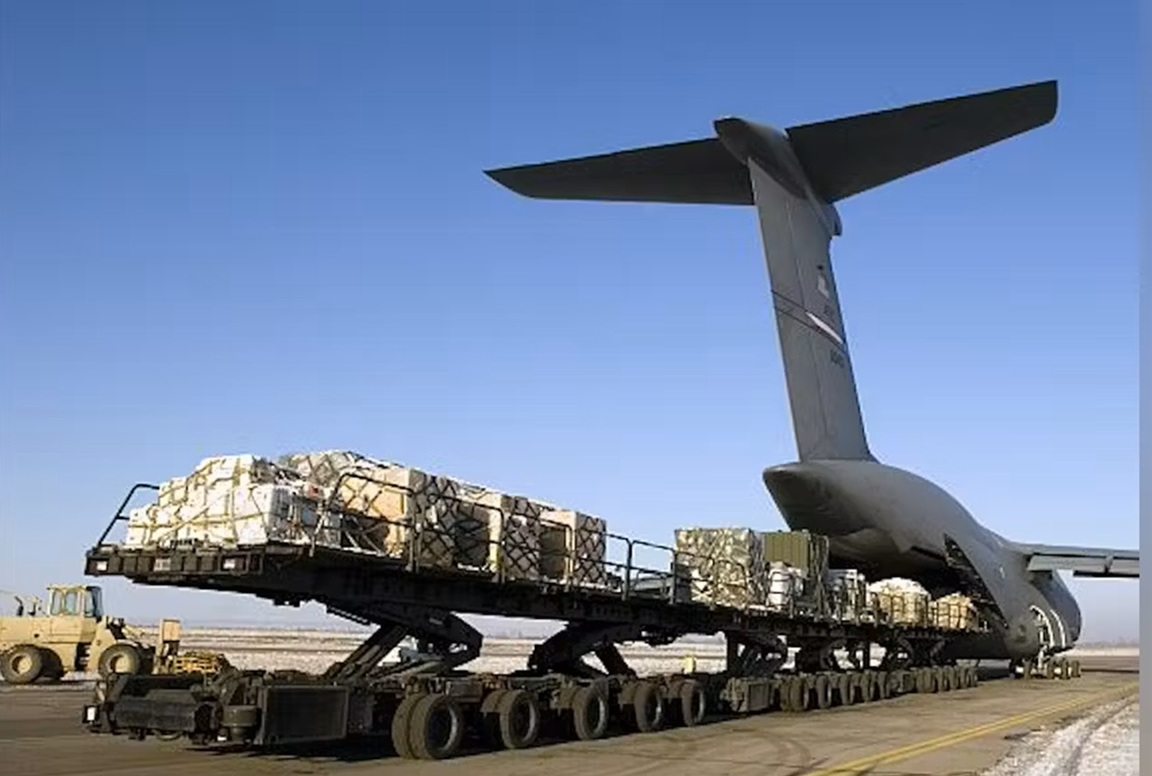The plight of Afghan women is very dreadful ever since the Taliban have started controlling the civil society.
Women have taken up arms and guns in northern and central Afghanistan, marching in the streets in their hundreds and sharing pictures with assault rifles on social media, in a show of defiance as the Taliban make sweeping gains nationwide. One of the biggest demonstrations of women was in the central Ghor province, where hundreds of women turned out at the weekend, waving guns and chanting anti-Taliban slogans. They are not likely to head to the frontlines, God forbid, to fight the dangers of the marauding and ruthless Taliban, in large numbers any time soon, because of both social conservatism, public pressure and lack of experience. But the public demonstrations, at a time of urgent threat from the militants, are a reminder of how frightened many women are about what Taliban rule will mean for them and their families.
“There were some women who just wanted to inspire security forces, just pure symbolism, but many more were ready to go to the battlefields,” said Halima Parastish, Head of the Women’s Directorate in Ghor and one of the marchers. “That includes me, I and some other women told the Governor, around a month ago, that we’re ready to go and fight.”
The Taliban have been sweeping across rural Afghanistan, taking dozens of districts including in places like northern Badakhshan province, which 20 years ago was an anti-Taliban stronghold. They now have multiple provincial capitals effectively under siege.
As of July 5th 2021, the Taliban have taken over 122 districts since May 1st 2021, according to an analysis by the Foundation for Defence of Democracies, a hawkish think tank that closely tracks the Afghanistan insurgency. Afghan forces are surrendering military outposts, and the Taliban are seizing their weapons and taking shelter in nearby Tajikistan. Afghans are feeling their nation is fast withering away.
After more than 40 years of war, refugee crises are sadly familiar for Afghanistan. There are nearly 3 million registered Afghan refugees worldwide, equivalent to around 1 in 10 of all the refugees in the world. But a perfect storm of factors suggests the next crisis could be especially acute: an emboldened and expanding insurgency, major terrorist violence, the US withdrawal, a fading peace process and severe drought conditions to boot and above all the displacing of citizens to safer locations away from their homeland, maybe forever. Europe is not taking any refugees and in fact sending several Syrians back to their country of origin from Denmark, where the social integration of refugees with the civil society is not happening. The worst affected are the women, who have to ensure the safety of children, homes and maybe more mouths to feed, due to the lust of men.
It is rare, but not unprecedented, for Afghan women to take up arms, particularly in slightly less conservative parts of the country. In areas they control, the Taliban have already brought in restrictions on women’s education, no music, no outdoor activities, their freedom of movement and their clothing, activists and residents of those areas say. In one area, flyers were circulating demanding women put on the burqa. Even though Afghanistan is called a rentier state unless you count what the Taliban does. Their capacity to collect taxes is pretty weak, for two reasons – they don’t have institutions to do that effectively, and there aren’t a lot of people who can and are willing to pay taxes.
Even women from extremely conservative rural areas aspire to more education, greater freedom of movement and a greater role in their families, according to an important new survey of a group whose voices are rarely heard. Taliban rule will take these women in the opposite direction, far from being empowered.
“No woman wants to fight, I just want to continue my education and stay far away from the violence but conditions made me and other women stand up,” said one journalist in her early 20s from northern Jowzjan, where there is a history of women fighting. She attended a day’s training on weapons handling in the provincial capital, which is currently besieged. She asked not to be named in case the province falls to the Taliban. “I don’t want the country under the control of people who treat women the way they do. We took up the guns to show if we have to fight, we will.” She said a few dozen women were learning to use guns with her, and despite their inexperience, they would have one advantage over men, if they face the Taliban, she added. “They are frightened of being killed by us, they consider it shameful.” Manhood is at stake for sure.
For conservative militants, facing women in battle can be humiliating. ISIS fighters in Syria were reportedly more frightened of dying at the hands of female Kurdish forces than being killed by men. It is rare, but not unprecedented, for Afghan women to take up arms, particularly in slightly less conservative parts of the country.
Last year teenager Qamar Gul became famous nationwide after fighting off a group of Taliban who killed her parents. The militants included her own husband. In Baghlan province, a woman called Bibi Aisha Habibi became the country’s only female warlord in the wake of the Soviet invasion and the civil war that followed. She was known as Commander Kaftar or Pigeon. And in northern Balkh, 39-year-old Salima Mazhari has recently been fighting on the frontlines in Charkint, where she is District Governor, very near the Iranian border, where this Mazhari clan lives.

Women have also joined Afghanistan’s security forces over the past two decades, including training as helicopter pilots, with help and assistance from India, although they have faced discrimination and harassment from colleagues and are rarely found on the frontlines. The Taliban shrugged off Afghanistan’s historical precedents, claiming the demonstrations were propaganda, and men would not allow female relatives to fight.
“Women will never pick up guns against us. They are helpless and forced by the defeated enemy,” said spokesman Zabihullah Mujahid. “They can’t fight.” The Ghor provincial Governor, Abdulzahir Faizzada, said in a phone interview that some of the women who came out in the streets of Firozkoh, the provincial capital, had actually already battled the Taliban, and most had endured violence from the group. “The majority of these women were those who had recently escaped from Taliban areas. They have already been through the war in their villages, they lost their sons and brothers, they are angry,” he said. Faizzada added that he would train women who don’t have experience with weapons if the government in Kabul approved it.
The Taliban’s conservative rules are particularly unwelcome in Ghor, where women traditionally wear headscarves rather than covering themselves fully with the burqa and work in fields and villages beside their men, Parastish said.
The Taliban have banned women even from taking care of animals or working the land in areas of Ghor they control, she added. They also closed girl schools, ordered women not to leave home without a male guardian, and even banned them from gathering for weddings, saying only men should attend. Women from these areas were among those who marched. “More than a dozen women have escaped from Allahyar in Shahrak district last week and came to us and asked for guns to go and fight for their lands and freedom. The same situation is in the Charsadda region,” Parastish said.
“Women said: ‘We are getting killed and injured without defending ourselves, why not fight back?’ They were telling us that at least two women were in labour in their region, with no medical things around and they couldn’t come with them.” For now, the main thing holding the women back was the men in power, she claimed. “The Governor said there is no need for us now, and they will let us know.”
Now that India is enrolled in the big league of nations – the Quad – it wants to feel big and grow bigger strategic nails. Talking to the Taliban is certainly viewed as part of New Delhi’s formula to appear serious and strategic, and not remain tied to ideology. However, the engagement may not necessarily have an impact on India’s national security or its calculated gains in Afghanistan. The shift is more about India feeling that it has come of strategic age and less about immediate security benefits. All the arguments about beefing up India’s security or allaying fears on the return of Taliban in Kashmir after the American withdrawal are a justification of the move rather than anything real. Tactically, it also signals Pakistan that New Delhi is not willing to give up its geopolitical stakes in Afghanistan and hence, explains the bid to engage a group of warriors, the Taliban, that have remained Pakistan’s forte for long.
In late June, India, as head of the Taliban Sanctions committee at the UN Security Council, assented to a US request to exempt 14 Afghan Taliban leaders from a travel ban, thereby allowing them to participate in “peace and reconciliation” discussions abroad.
There has been much speculation that EAM S. Jaishankar and his team have interacted with senior Taliban leaders like Mullah Baradar, but the government has vehemently denied the rumours. The decision to extend the travel exemption for Taliban leaders like Mullah Baradar and Sher Abbas Stanekzai for three more months is one step in a complex web of initiatives New Delhi is planning to keep itself relevant in the fast-evolving Afghanistan situation.
Washington in concert with Kabul, Afghanistan’s neighbours, NATO countries, and international aid groups should also push the Taliban to establish safe zones for people displaced inside Afghanistan. The best way to tackle a refugee crisis is to give people fewer incentives to leave. As the fighting mounts, this will admittedly become a hard sell. As Afghans continue to flee violence, they’ll need help, support and that too quickly.
The time is ripe to create a safe zone within Afghanistan.
Title image courtesy: https://www.voanews.com/extremism-watch/taliban-impose-new-restrictions-women-media-afghanistans-north
Disclaimer: The views and opinions expressed by the author do not necessarily reflect the views of the Government of India and Defence Research and Studies






